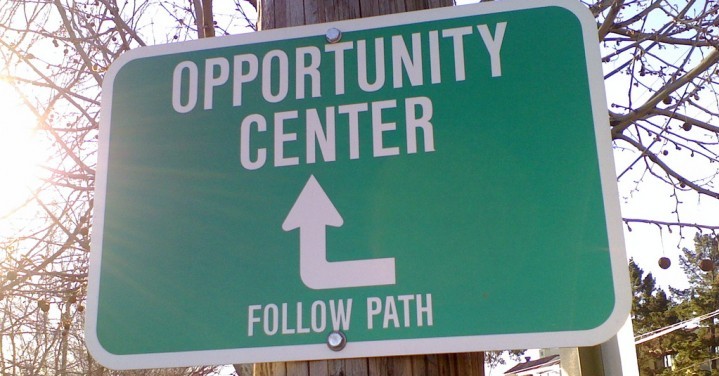
We recently wrote about a powerful storytelling technique called Problem⇒Solution. It is a “cause and effect” technique, where you lay out the problem first, quantify the problem, and then share the solution and the benefits of the solution… and you do all of that as part of the OPEN in your presentation, conversation or meeting. It is a technique that will help you set context and get to the point quickly and clearly. Your audience, especially an executive audience, will love the clarity and the brevity that this technique creates.
There is another version of this technique that you should have in your toolbox: Opportunity⇒Leverage. The technique works the same way as Problem⇒Solution, but with a different spin on the story. In this case, you are not presenting the issue as a “problem” but rather as an “opportunity.” And instead of a “solution” you are sharing a way to “leverage” the opportunity. In other words, instead of presenting the potential negative side of the problem, you are presenting the potential positive side of the opportunity.
The technique works the exact same way. You start off by describing the opportunity that is in front of you, and if necessary, the circumstances that have created the opportunity. Then quantify the opportunity — the potential ROI, savings, cost avoidance, etc. Then outline the recommended method for leveraging the opportunity, and finally the benefits of your proposal plan to leverage it. Again, this is a cause and effect technique.
We recommend keeping these techniques in your toolbox, as well as a third version called Issue⇒Action. All three techniques accomplish the same thing – they allow you to clearly articulate the key elements of the story, whether during the open of your meeting/call/presentation, or during that quick conversation in the hallway with your boss. All three techniques allow you to achieve clarity, brevity, context, impact and value. And as you may recall from previous writings on this blog, if you can achieve those five things, your communication will be powerful.
How do you choose between the three? It comes down to the tone of the story you want to tell. Do you want a positive spin? Then use Opportunity⇒Leverage. A more serious, risk management tone? Problem⇒Solution. Or perhaps you want a neutral tone in your presentation? Issue⇒Action.
A full communication skills toolbox makes you a more flexible and effective communicator.
Good luck!






Comments